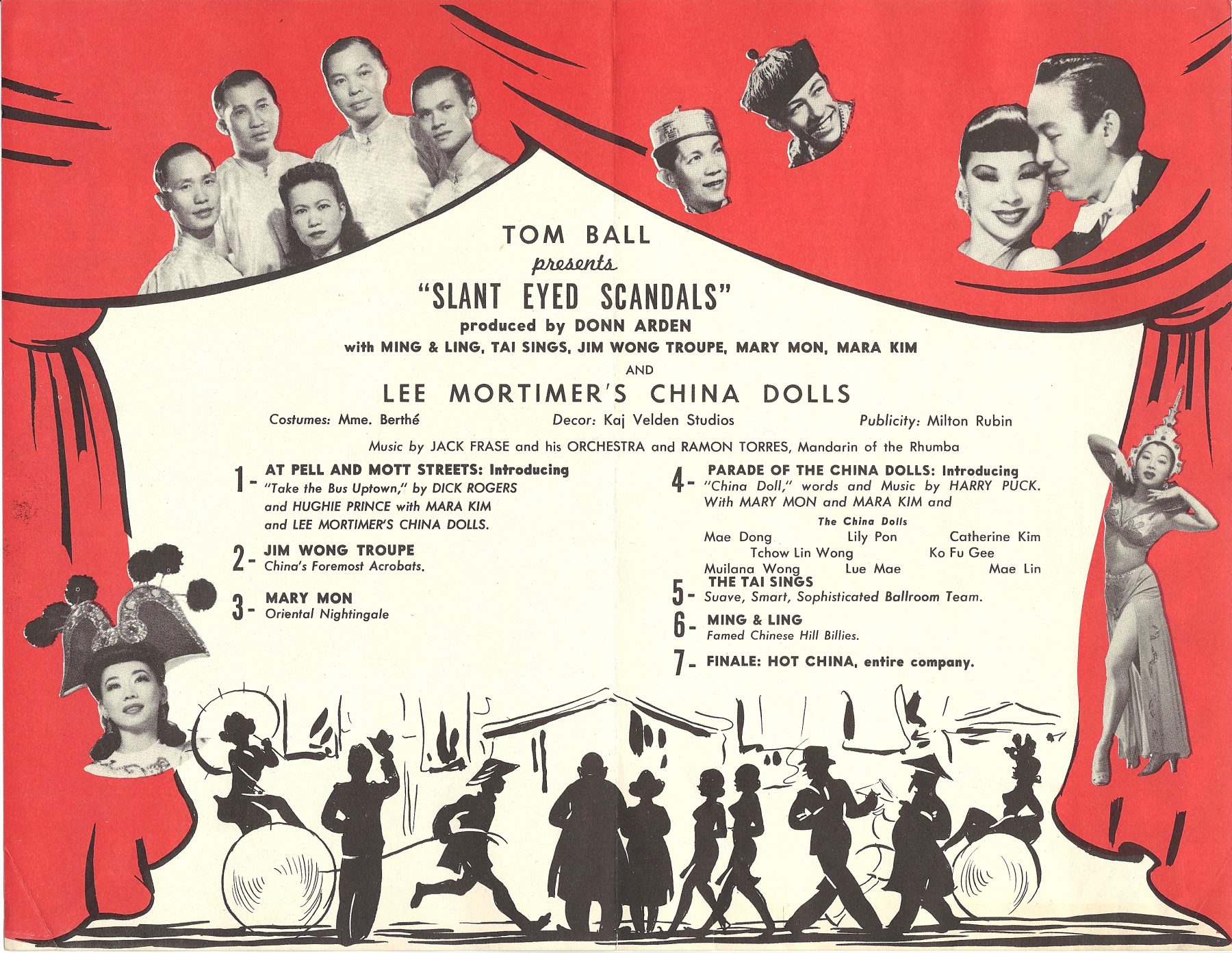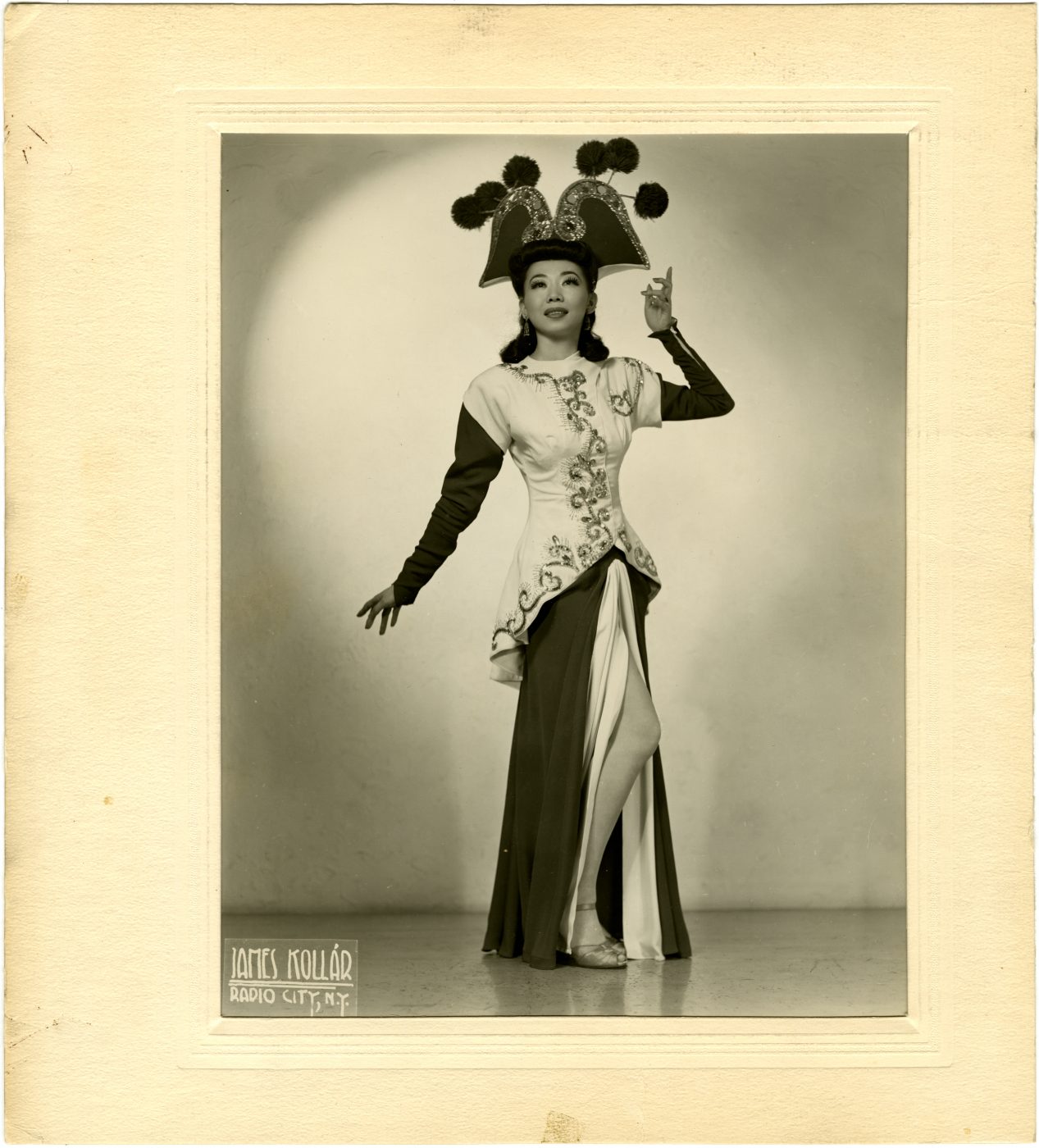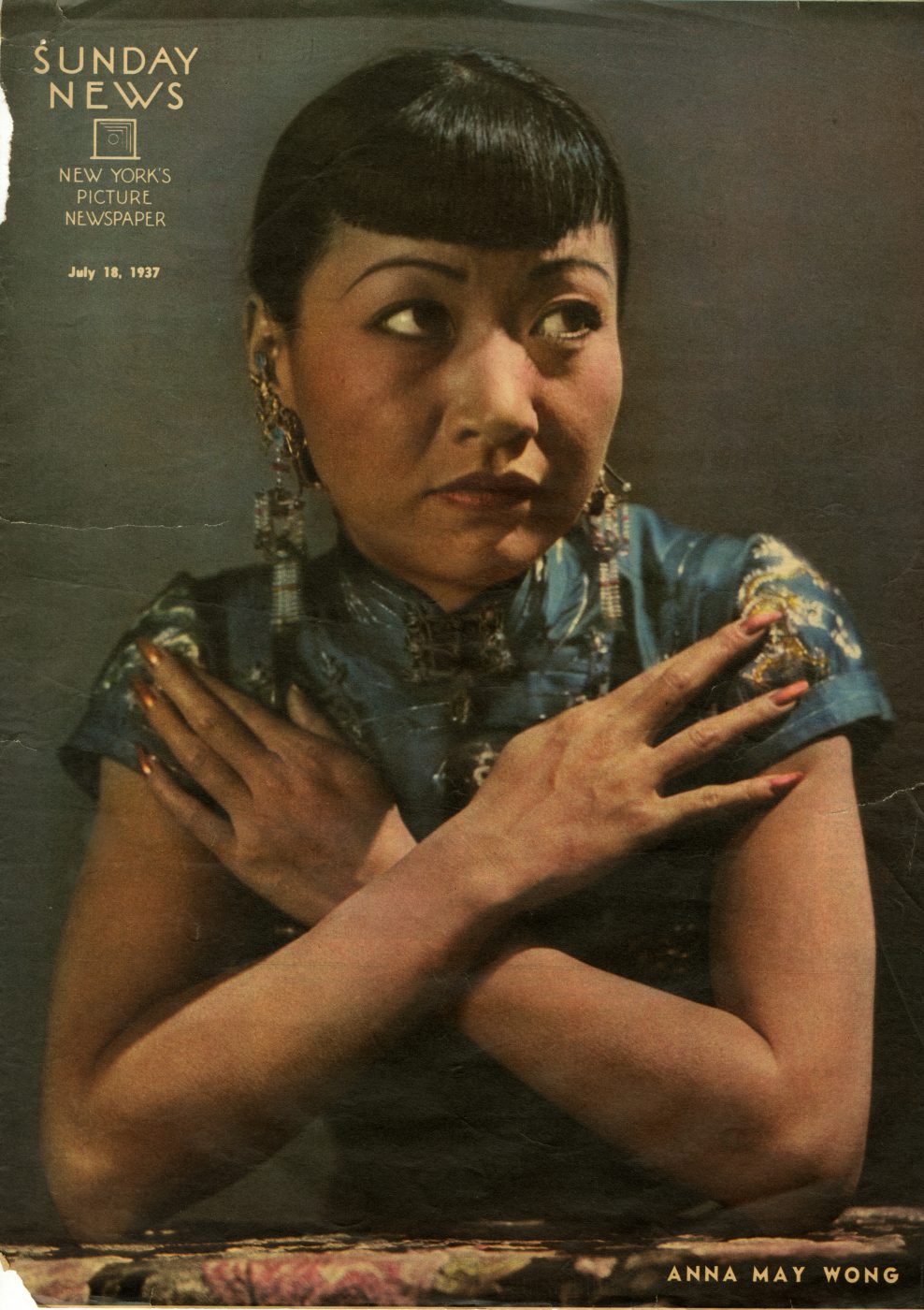In 1938, Chinese American club owner Charlie Low opened the Forbidden City in San Francisco, the most famous of the “chop suey circuit” of Chinese nightclubs that thrived throughout the 40s and 50s. While the clubs sometimes played off “Oriental” stereotypes, the all-Asian casts of dancers and singers largely performed popular American songs and dances of the times. These vaudeville floor shows shocked the conservative Chinese communities and puzzled white crowds, who were fascinated by the Asian performers singing, dancing, and dressing in ways they had never seen before.
Following the success of the West Coast circuit, Tom Ball, a Caucasian stage producer, opened China Doll in New York on 51st between Broadway and 7th Avenue in 1946 and billed it as “New York’s only all-oriental night club.” China Doll differed in many ways from the West Coast establishments like Forbidden City. It chose a pale blue color scheme that contrasted with the palatial reds and golds of San Francisco’s clubs; this design choice was meant to draw the more well to do New York crowds. A much more significant change was that the China Doll played on Asian stereotypes in ways that Chinese-owned San Franciscan clubs did not. This difference led to shows with names such as “Maid in China” and “Slant Eyed Scandals.” Like the black entertainers uptown at the Apollo Theater or the Cotton Club, the Asian performers often experienced racist degradation while on stage. Still, chop suey circuit nightclubs like China Doll introduced a new image of Asian American performers to a broad audience and enabled the careers of a whole generation of Asian American entertainers.


